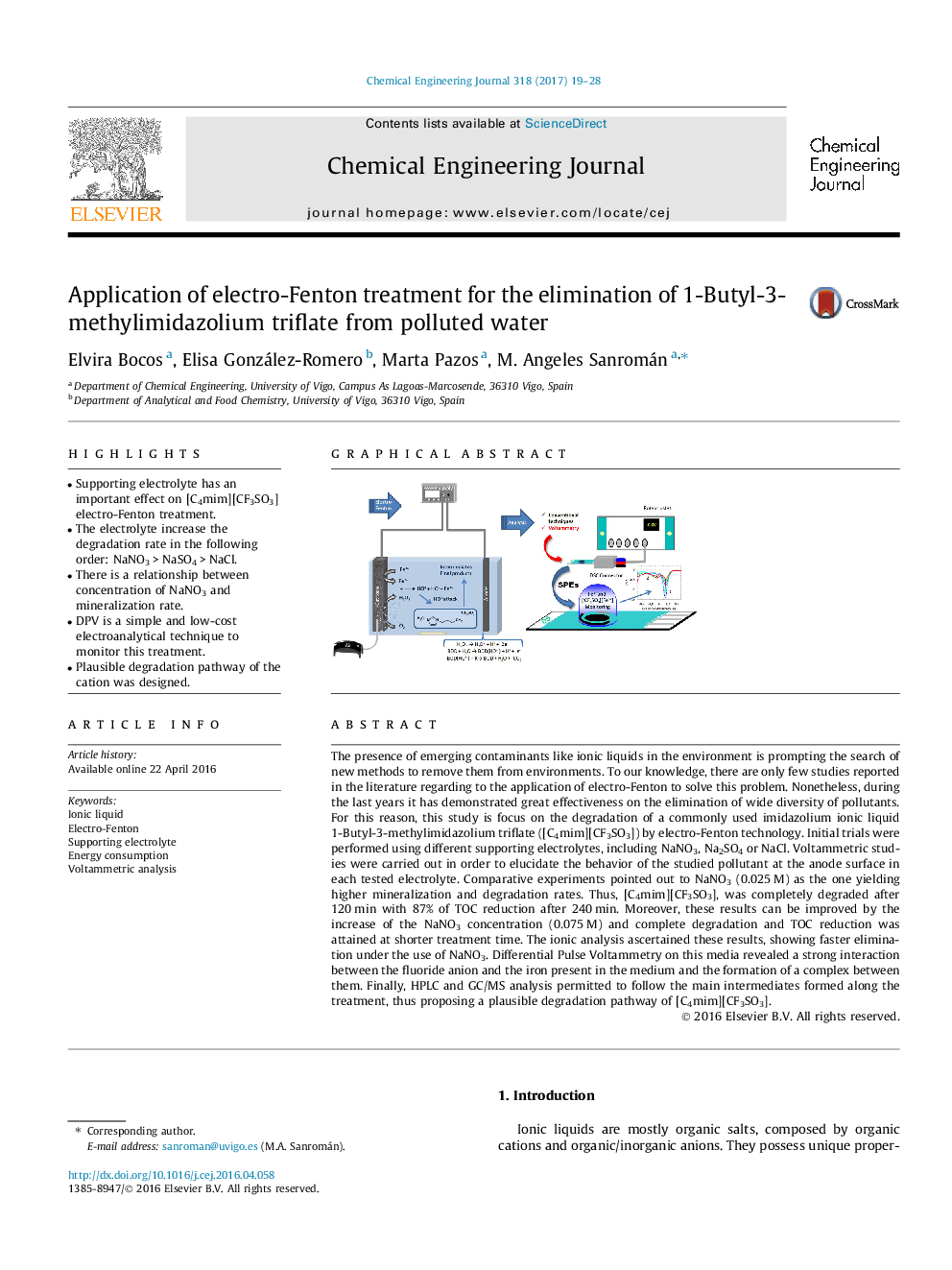| کد مقاله | کد نشریه | سال انتشار | مقاله انگلیسی | نسخه تمام متن |
|---|---|---|---|---|
| 6466240 | 1422960 | 2017 | 10 صفحه PDF | دانلود رایگان |

- Supporting electrolyte has an important effect on [C4mim][CF3SO3] electro-Fenton treatment.
- The electrolyte increase the degradation rate in the following order: NaNO3Â >Â NaSO4Â >Â NaCl.
- There is a relationship between concentration of NaNO3 and mineralization rate.
- DPV is a simple and low-cost electroanalytical technique to monitor this treatment.
- Plausible degradation pathway of the cation was designed.
The presence of emerging contaminants like ionic liquids in the environment is prompting the search of new methods to remove them from environments. To our knowledge, there are only few studies reported in the literature regarding to the application of electro-Fenton to solve this problem. Nonetheless, during the last years it has demonstrated great effectiveness on the elimination of wide diversity of pollutants. For this reason, this study is focus on the degradation of a commonly used imidazolium ionic liquid 1-Butyl-3-methylimidazolium triflate ([C4mim][CF3SO3]) by electro-Fenton technology. Initial trials were performed using different supporting electrolytes, including NaNO3, Na2SO4 or NaCl. Voltammetric studies were carried out in order to elucidate the behavior of the studied pollutant at the anode surface in each tested electrolyte. Comparative experiments pointed out to NaNO3 (0.025Â M) as the one yielding higher mineralization and degradation rates. Thus, [C4mim][CF3SO3], was completely degraded after 120Â min with 87% of TOC reduction after 240Â min. Moreover, these results can be improved by the increase of the NaNO3 concentration (0.075Â M) and complete degradation and TOC reduction was attained at shorter treatment time. The ionic analysis ascertained these results, showing faster elimination under the use of NaNO3. Differential Pulse Voltammetry on this media revealed a strong interaction between the fluoride anion and the iron present in the medium and the formation of a complex between them. Finally, HPLC and GC/MS analysis permitted to follow the main intermediates formed along the treatment, thus proposing a plausible degradation pathway of [C4mim][CF3SO3].
168
Journal: Chemical Engineering Journal - Volume 318, 15 June 2017, Pages 19-28